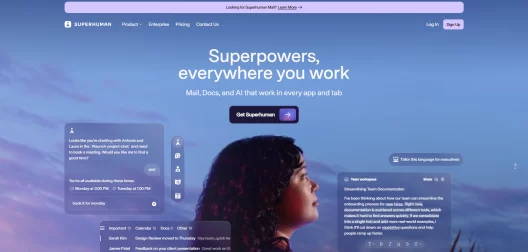Grammarly, one of the most recognizable names in digital writing assistance, is entering a bold new chapter. In October 2025, the company officially announced that it’s rebranding itself as Superhuman, marking a major shift from grammar correction to full-scale AI productivity. Alongside the new identity, Superhuman unveiled an intelligent assistant designed to streamline how people write, communicate, and organize their daily work.
This isn’t just a name change — it’s a statement about where the company sees the future of work heading.
A Shift Beyond Grammar
For over a decade, Grammarly has been a trusted writing tool, improving everything from student essays to corporate emails. But as artificial intelligence evolved, so did user expectations. People no longer just wanted help fixing mistakes; they wanted help thinking, planning, and acting.
By adopting the Superhuman name, the company signals its intention to create a comprehensive AI workspace that does more than polish text — it actively supports decision-making, task management, and communication.
According to official statements, this rebrand also unifies the company’s previous acquisitions: the Superhuman email client and Coda, a document collaboration platform. Together, they form the backbone of Superhuman’s new vision — a connected ecosystem powered by context-aware AI.
Introducing Superhuman Go: The AI That Works Everywhere
At the heart of this rebrand is Superhuman Go, an advanced AI assistant built to function across multiple tools and platforms. Unlike traditional chatbots, Go is designed to understand context — it can summarize long email threads, draft replies, organize to-do lists, and even anticipate what you might need next.
For example, if you’re reviewing a document and need to schedule a follow-up meeting, Go can suggest a time based on your calendar, prepare an agenda, and send the invite — all in one flow.
The assistant integrates directly with email, messaging apps, and productivity tools, meaning users won’t have to switch between windows or copy-paste data. It’s an evolution of what Grammarly used to be: still helpful with writing, but now equipped to manage your digital life.
What the Rebrand Means for Users
Grammarly stays — but as part of something bigger. The grammar and style correction features millions already use will remain, but under the Superhuman Suite.
- Early access to Superhuman Go is rolling out for current Grammarly Premium users, free through early 2026.
- Unified design and experience. Whether you’re writing an email, collaborating in Coda, or chatting online, Superhuman aims to deliver one cohesive AI-driven experience.
This new direction places the company in direct competition with Microsoft’s Copilot, Google Workspace AI, and Notion AI — but with a focus on communication and clarity rather than coding or search.
Why Superhuman’s Move Makes Sense
Grammarly’s user base exceeds 30 million people per day, making it one of the most adopted productivity tools globally. By transforming that scale into an AI platform, Superhuman gains a massive testbed for real-world intelligence.
The rebrand also modernizes the company’s identity — appealing to professionals, startups, and creators who already associate the name Superhuman with efficiency and premium tools.
More importantly, it positions the brand for the AI agent revolution — where software doesn’t just follow commands, but takes initiative on behalf of the user.
Challenges Ahead
Of course, the transformation isn’t without risks.
Brand confusion could emerge as users wonder what happens to “Grammarly” as a product.
Privacy concerns will remain top of mind, especially as AI assistants gain more access to user data.
Delivering real value beyond marketing promises will determine whether this rebrand becomes a milestone — or a missed opportunity.
Still, the timing couldn’t be better. With AI rapidly reshaping how people work, Superhuman’s move feels less like a gamble and more like a natural evolution.








